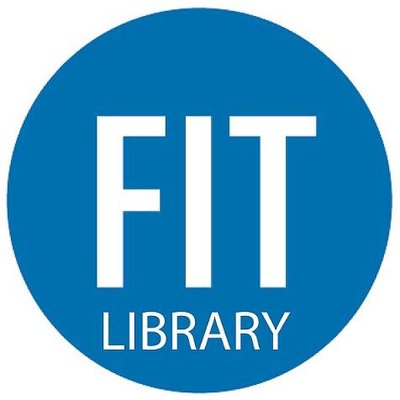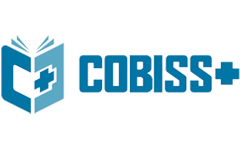Early Stimulation in Learning Activation on Early Childhood
DOI:
https://doi.org/10.61841/edgst377Keywords:
early stimulation, learning, methodological orientations, pedagogical resources, skillsAbstract
The purpose of this scientific research is to describe the importance of the early stimulation process in the activation of the learning of children in initial education; as well as highlighting the difficulties that exist, the methodological guidelines applied, the pedagogical resources used, the participation of parents/family and other variants related to the subject. To achieve these purposes, it was necessary to apply a qualitative-quantitative study, guided by the inductive, deductive, descriptive, analytical-synthetic, statistical, descriptive and bibliographic methods to determine, verify and understand the processes involved in early education. The results achieved show that early stimulation is a timely training process, where children develop skills and begin the activation of learning, being feasible to apply strategies through a set of techniques, recreational activities and teaching resources that facilitate integral development Education is the responsibility of teachers and parents who must stimulate children in order to contribute to the construction of knowledge to enhance initial training, this being the main axis, which guarantees the development of the potential and intelligence of infants during the first years of life in interactive environments.
Downloads
References
1. Adhi, K. T., Utami, N. W. A., Astuti, P. A. S., & Putra, I. G. N. E. (2018). Validation of integrated health services data on coverage of weighing programs of children under five. International Journal of Health Sciences, 2(3), 65-71. https://doi.org/10.29332/ijhs.v2n3.224
2. Agudelo, L., Pulgarín, L., &Tabares, C. (2017). La estimulación sensorial en el desarrollo. Fuentes, 19(1), 73-83.
3. Ali, K., Fatima, S., Tarique, T., & Chandio, R. (2019). Stylistic analysis of charles lamb’s essay dream childrenreverie. International Journal of Linguistics, Literature and Culture, 5(6), 68-77. https://doi.org/10.21744/ijllc.v5n6.760
4. Arini, N. M., Yadnyawati, I. A. G., &Paramartha, W. (2019). Swadharma grihastha asrama on educating
children toward Hindu families. International Journal of Social Sciences and Humanities, 3(3), 10-17.
https://doi.org/10.29332/ijssh.v3n3.339
5. Barreno, Z., &Macías, J. (2015). Estimulacióntemprana para potenciar la inteligenciapsicomotriz. Ciencia
UNEMI, 8(15), 110-118.
6. Billaiya, R., Jain, A., Agarwal, R., & Jain, P. (2017). Introduction about child health status in
India. International Journal of Health Sciences, 1(1), 12-22. https://doi.org/10.21744/ijhs.v1i1.18
7. Bravo, M., & Pons, L. (2014). La educacióntemprana de 3 a 7 años.España: Palabra.
8. Cano, R., & Casado, M. (2015). Escuela y familia. Dos pilaresfundamentales para unasbuenasprácticas de
orientacióneducativa a través de las escuelas de padres. Interuniversitaria de formación de profesorado, 18(2),
15-28.
9. Carmiol, A., Cruz, T., & Molina, M. (2014). Promoviendo el desarrollo conceptual en las aulas de preescolar:
una sistematización de hallazgos de investigación. Actualidadesinvestigativaseneducación, 14(1), 1-30.
10. Cedeño, R., & Vásquez, M. (2014). Estudio actual de los programs de estimulacióntempranadesarrolladosen
los 7 centros de educación especial de la provincia de manabí y propuesa de guía de integración sensorial para
niños y niñas con discapacidad visual. Universidad PolitecnicaSalesiana. Ecuador: Universidad
PolitecnicaSalesiana.
11. Celso, A. (2014). Estimulación del cerebroinfantildesde el nacimiento hasta los 3 años. Madrid: Narcea.
12. Esteves, Z., Avilés, M., & Matamoros, Á. (2018). La estimulacióntempranacomo factor fundamental en el
desarrolloinfantil.
13. Esteves, Z., Garcés, N., Toala, V., & Poveda, E. (2018). La importancia del uso del material didáctico para la
construcción de aprendizajessignificativosen la EducaciónInicial. Innova, 3(6), 168-176.
14. García, J., & Sánchez, K. (2015). Conocimientossobreestimulacióntempranaen un grupo de docentes de
educacióninicial. Praxis InvestigativaRedie, 7(12), 7-16.
15. Garza, J. (2014). El impacto de la estimulacióntempranaen la primerainfancia. México: Universidad de
Monterrey.
16. Giler, R. D. G., Zambrano, T. Y. M., Anzules, F. E. V., & Burgos, V. D. P. Z. (2019). Sensory playful corners
on stimulation of children from one to three years. International Journal of Social Sciences and
Humanities, 3(2), 217-223. https://doi.org/10.29332/ijssh.v3n2.317
17. Gómez, G. (2014). Estimulacióntempranaen el desarrolloinfantil. Guatemala: Universidad Rafael Landivar.
18. Gorda, A. O. S., Romayanti, K. N., &Anggreswari, N. P. Y. (2018). Social capital, spiritual capital, human
capital, and financial capital in the management of child welfare institutions. International Journal of Social
Sciences and Humanities, 2(3), 12-20. https://doi.org/10.29332/ijssh.v2n3.183
19. Haswadi, M., Syarifudin, -, &Rusdiawan, -. (2018). Children Phonological Acquisition for 3 to 5-YearOlds. International Journal of Linguistics, Literature and Culture, 4(1), 16-21. Retrieved from
https://sloap.org/journals/index.php/ijllc/article/view/68
20. Holguin, K., Sierra, G., &Quiñones, S. (2012). Estrategiasmetodológicasempleadas por los docentes de
educaciónpreescolar del municipio de San Sebastián de Mariquita (Tolima) en la enseñanza de la lectura. Logos
ciencias y tecnología, 3.
21. Ibáñez, P., Mudarra, M., & Alfonso, C. (2014). Atencióntemprana. Madrid: Universidad Nacional de Educación
a Distancia.
22. Marafad, L. O. S., &Niampe, L. (2018). The role of falia expression in forming the character of a child in ethnic
Muna in Muna district, Southeast Sulawesi. International Journal of Linguistics, Literature and Culture, 2(4),
131-139.
23. Moreno, F. (2015). Funciónpedagógica de los recursosmaterialeseneducacióninfantil. Vivat Academia, 18(133),
12-25.
24. Navarro, E., Baun, A., Behra, R., Hartmann, N. B., Filser, J., Miao, A. J., ... &Sigg, L. (2008). Environmental
behavior and ecotoxicity of engineered nanoparticles to algae, plants, and fungi. Ecotoxicology, 17(5), 372-386.
25. Nista-Piccolo, VL, & Moreira, WW (2015). Movement and corporal expression in Infant Education: In Infant Education (Vol. 79). Narcea Editions.
26. Peniro, R., &Cyntas, J. (2019). Applied linguistics theory and application. Linguistics and Culture Review, 3(1), 1-13. https://doi.org/10.37028/lingcure.v3n1.7
27. Ramírez, P., Patiño, V., &Gamboa, E. (2014). La educacióntemprana para niños y niñasdesdenacimiento a los 3 años: Tres perspectivas de análisis. Educare, 18(3), 67-90.
28. Regidor, R. (2015). Las capacidades del niño.España: Regidor.
29. Sáez, J. (2018). Estilos de aprendizaje y métodos de enseñanza. Madrid: UNED.
30. Sangacha, E. (2016). Los rincones de aprendizaje y suincidenciaen el desarrollo de la autonomía de los niños/as de inicial. Quito: Universidad Cental del Ecuador.
31. Stein, L. (2012). Estimulacióntemprana. Argentina: LEA.
32. Suiraoka, I. P., Duarsa, D. P. P., Wirawan, I. D. N., &Bakta, I. M. (2017). Perception of parents, teachers, and nutritionist on childhood obesity and barriers to healthy behavior: a phenomenological study. International Journal of Health Sciences, 1(2), 1-11. https://doi.org/10.21744/ijhs.v1i2.25
33. Suryasa, W. (2019). Historical Religion Dynamics: Phenomenon in Bali Island. Journal of Advanced Research in Dynamical and Control Systems, 11(6), 1679-1685.
34. Tjiang, N., &Sidiartha, I. G. L. (2018). Lipid profile in obese children with and without insulin resistance. International Journal of Health Sciences, 2(2), 9-17. https://doi.org/10.29332/ijhs.v2n2.110
35. Valverde, L. (2019). Materialeseducativos para la educacióntempranaenniños y niñas del I ciclo del nivel de educacióninicial. Lima: Universidad Nacional de Educación Enrique Guzmán y Valle.
36. Widowati, S., Ginaya, G., &Triyuni, N. N. (2019). Penta helix model to develop ecotourism. International Journal of Social Sciences and Humanities, 3(2), 31-46. https://doi.org/10.29332/ijssh.v3n2.288
Downloads
Published
Issue
Section
License
Copyright (c) 2020 AUTHOR

This work is licensed under a Creative Commons Attribution 4.0 International License.
You are free to:
- Share — copy and redistribute the material in any medium or format for any purpose, even commercially.
- Adapt — remix, transform, and build upon the material for any purpose, even commercially.
- The licensor cannot revoke these freedoms as long as you follow the license terms.
Under the following terms:
- Attribution — You must give appropriate credit , provide a link to the license, and indicate if changes were made . You may do so in any reasonable manner, but not in any way that suggests the licensor endorses you or your use.
- No additional restrictions — You may not apply legal terms or technological measures that legally restrict others from doing anything the license permits.
Notices:
You do not have to comply with the license for elements of the material in the public domain or where your use is permitted by an applicable exception or limitation .
No warranties are given. The license may not give you all of the permissions necessary for your intended use. For example, other rights such as publicity, privacy, or moral rights may limit how you use the material.
















